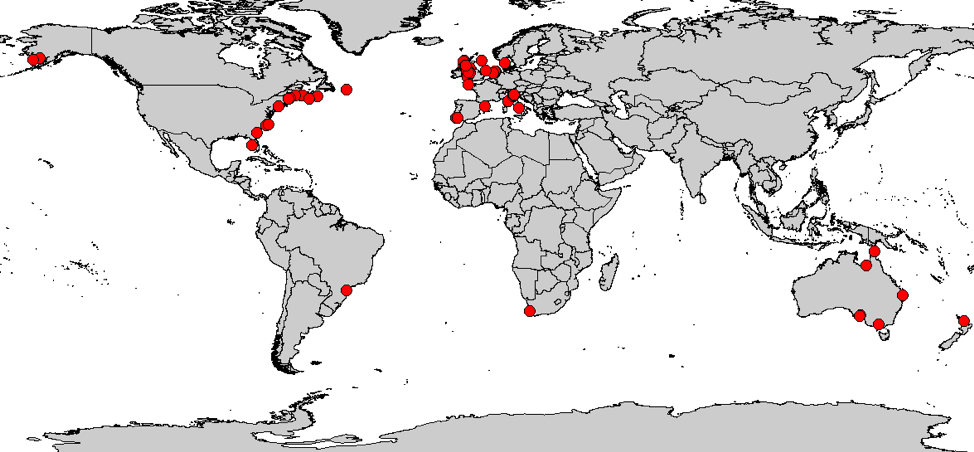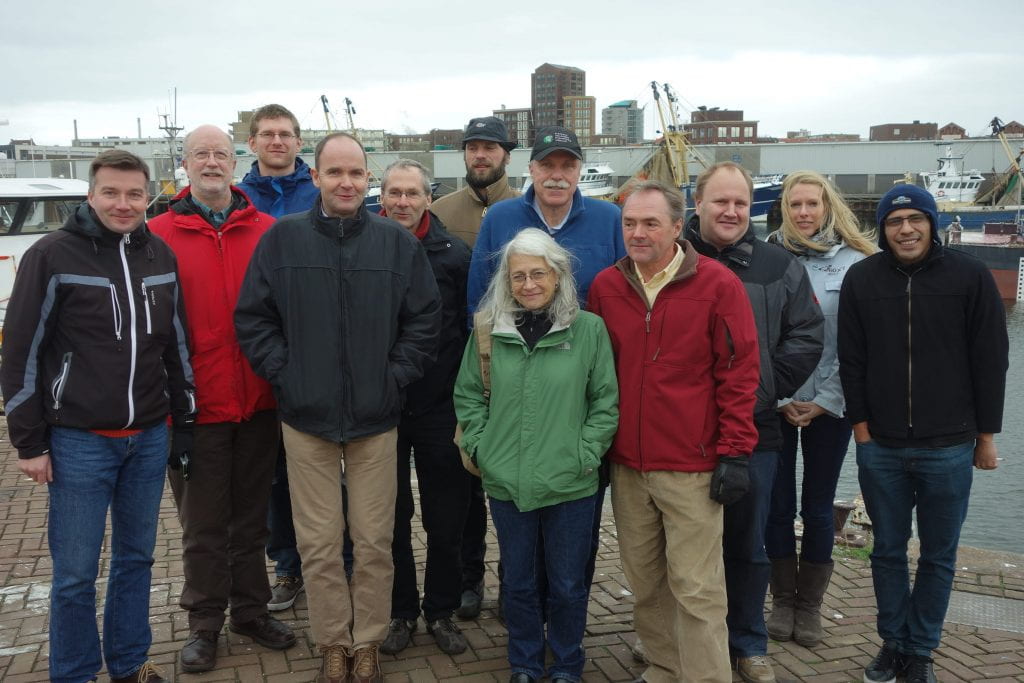Timeline
Article: Bottom trawl-fishing footprints on the world’s continental shelves
Published in PNAS Journal by Amoroso, et al. Bottom trawlers land around 19 million tons of fish and invertebrates annually, almost one-quarter of wild marine landings. The extent of bottom trawling footprint (seabed area trawled at least once in a specified region and time period) is often contested but poorly described.
Article: Global analysis of depletion and recovery of seabed biota following bottom trawling disturbance
Published in Proceedings of the National Academy of Sciences (PNAS) Journal by Hiddink et al. Bottom trawling is the most widespread human activity affecting seabed habitats. Here, we collate all available data for experimental and comparative studies of trawling impacts on whole communities of seabed macroinvertebrates on sedimentary habitats and develop widely applicable methods to estimate depletion and recovery rates of biota after trawling.
Article: Estimating the sustainability of towed fishing-gear impacts on seabed habitats: a simple quantitative status assessment method applicable to data-poor fisheries
Published in Methods in Ecology and Evolution Journal by Pitcher et al. Impacts of bottom fishing, particularly trawling and dredging, on seabed (benthic) habitats are commonly perceived to pose serious environmental risks. Quantitative ecological risk assessment can be used to evaluate actual risks and to help guide the choice of management measures needed to meet sustainability objectives.
Article: Indirect Effects of Bottom Fishing on the Productivity of Marine Fish
Published in Fish and Fisheries Journal by Collie et al. One quarter of marine fish production is caught with bottom trawls and dredges on continental shelves around the world. Towed bottom‐fishing gears typically kill 20–50 per cent of the benthic invertebrates in their path, depending on gear type, substrate and vulnerability of particular taxa. Particularly vulnerable are epifaunal species, which stabilize the sediment and provide habitat for benthic invertebrates. To identify the habitats, fisheries or target species most likely to be affected, we review evidence of the indirect effects of bottom fishing on fish production.
Workshop on use of best available science in developing and promoting best practices for trawl fishing operations in Latin America
An analysis of the datasets has revealed an underrepresentation of fisheries from Latin America which is one of the most important areas of the world in terms of the amount of trawl fishing that occurs. These trawl fisheries contribute to the alleviation of poverty through the provision of food and livelihoods for many people. Therefore, it was considered important to attempt to address this data gap and to engage with stakeholders and science users in the Latin American region to raise awareness about potential best practice for trawling. Potential research institutions, universities, organizations and individual experts involved in the data..Read More
Article: Prioritization of knowledge needs to achieve best practices for bottom-trawling in relation to seabed habitats
Published in Fish and Fisheries Journal by Kaiser et al. Management and technical approaches that achieve a sustainable level of fish production while at the same time minimizing or limiting the wider ecological effects caused through fishing gear contact with the seabed might be considered to be ‘best practice’. To identify future knowledge‐needs that would help to support a transition towards the adoption of best practices for trawling, a prioritization exercise was undertaken with a group of 39 practitioners from the seafood industry and management, and 13 research scientists who have an active research interest in bottom‐trawl and dredge fisheries.
Fourth Committee Meeting – Kingstown, Rhode Island, USA
Executive Summary of Meeting: The major data collection and analysis for this project is now complete and we have compiled the most extensive data ever assembled on the footprint of mobile bottom contact gear, with detailed data for Europe, Australia, New Zealand, Argentina, South Africa and most of the U.S.
Article: Investigating the effects of mobile bottom fishing on benthic biota: a systematic review protocol
Published in Environmental Evidence Journal by Hughes et al. Mobile bottom fishing, such as trawling and dredging, is the most widespread direct human impact on marine benthic systems. Knowledge of the impacts of different gear types on different habitats, the species most sensitive to impacts and the potential for habitats to recover are often needed to inform implementation of an ecosystem approach to fisheries and strategies for biodiversity conservation. This knowledge helps to identify management options that maximise fisheries yield whilst minimising negative impacts on benthic systems.
Third Committee Meeting – Bangkok, Thailand
Executive Summary of Meeting: This study group is now past the half-way point, and our data collection is largely complete. We have trawl footprint data for over a dozen regions that we used to calculate the proportion of the habitat that is trawled 0, 1, 2 and 3+ times per year. We have access to a global data base on seabed habitats and have begun to download data for our study regions.
Second Committee Meeting – IJmuiden, Netherlands
The study committee met to discuss the current status and next steps of the project. They reviewed the top priority research questions generated through the stakeholder consultation process, and will use these to guide the outputs generated from the project to ensure the outputs address the most urgent stakeholder needs. Updates on the progress in each phase:





